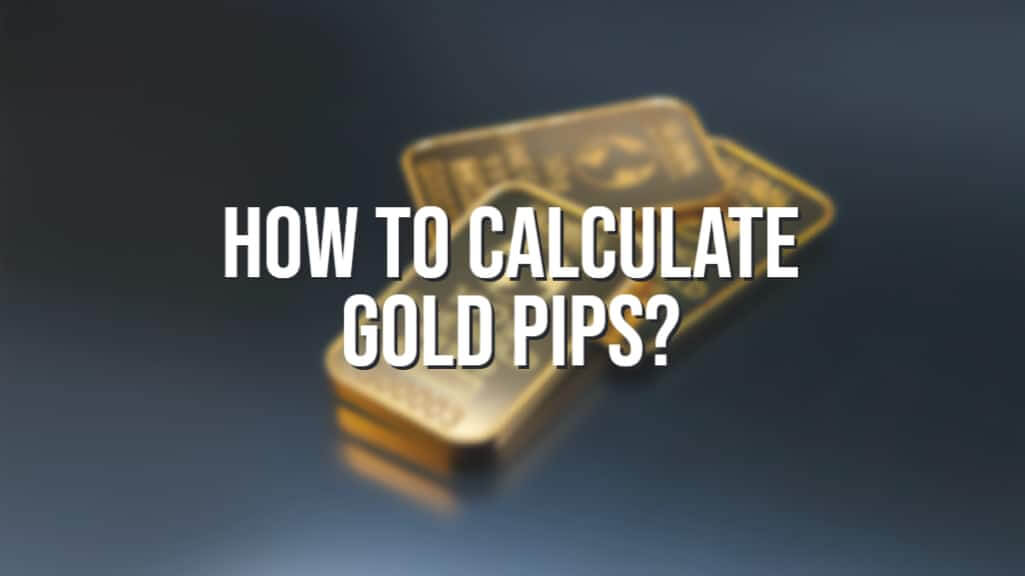
How to Calculate Gold Pips?
Gold is one of the most recognizable precious metals in the world. Journalists, analysts, and regulators discuss the price of gold on a regular basis.
Do you know how to calculate gold pips?
Before discussing gold pips, let’s gather more information about the subject.
The above-mentioned precious metal is traded in various ways, with the most basic being buying physical gold. Nonetheless, tremendous technological advancement has led to alternative ways of trading gold.
As opposed to opening an electronic gold trading position, buying physical gold is usually more expensive due to various factors.
It is important to note that trading gold electronically can be done in various ways, such as trading gold ETFs and gold CFDs. As a reminder, ETFs stand for exchange-traded funds, and CFDs stand for contract for difference.
Gold CFD pips
Let’s start from the beginning. Pip is the abbreviation of the price in percentage (pip). It would help if you remembered that it is the minimum change in a currency pair’s price.
In the case of the vast majority of quotes, this is the fourth number after a decimal. To cut a long story short, 1 pip translates to a price movement of 0.0001.
The vast majority of forex brokers offer a $0.01 gold pip. So, traders either lose or gain 0.01 for every pip the gold price moves. We can say that 1 dollar is equal to 100 pips.
Novice traders may find it hard to understand all the details about financial markets. Don’t worry! You aren’t alone! It is possible to become a successful trader without a degree in finance.
Hopefully, you will have the opportunity to use forex, commodity as well as equity index signals available on various platforms.
The interesting moment about gold CFDs is that you don’t own gold physically. It is similar to trading currency pairs. Do you know what the difference is between them?
The only difference is that traders buy or sell gold against the USD.
The gold CFD is expressed by XAU/USD. It is desirable to remember that USD is the dollar component. What about the XAU? It is the gold component.
When the price of gold is expected to decline, traders can sell this pair and buy the pair mentioned earlier when prices are projected to rise.

Is it hard to calculate profit and loss with pips?
We already discussed how to calculate gold pips; now, let’s focus on profit and loss. Let’s assume that you purchased one ounce of gold. Importantly, a 100-pip movement will make a difference of $1 in your gold trading account. It is possible to calculate your potential profit by simply multiplying the distance to your target by your trade size.
It is important not to forget that there is a considerable difference between a pip in forex and a gold trading pip.
The pip value on the EUR/USD is $0.01, which is ten times bigger compared to the value of a gold pip. As a result, a 100-pip move in the gold’s value can be compared to a 10-pip move in the EUR/USD.
Don’t underestimate the importance of economic events. There is no lack of economic factors that influence gold prices (gold pips movement.) For example, interest rates, inflation, the value of the U.S. dollar, etc.
Now, you know what to answer if someone wants to know “How to calculate gold pips.”
Gold and major economic events
As stated earlier, there are many economic factors that influence the price of gold, including inflation, interest rates, large gold transactions by central banks, etc.
Let’s take a look at some of the factors. We can start with interest rates. It is no secret that when interest rates are low, it becomes less attractive to hold cash in a savings account.
Central banks are closely monitoring the situation. They lower interest rates in order to boost
spending, which in turn forces investors to take their money out of banks and search for alternatives in order to keep up with inflation.
Interestingly, low-interest rates quite often coincide with an economic downturn, which is another factor that helps to boost the price of gold.
Apart from interest rates, there are other challenges as well. One of them is inflation. As we all know, inflation is a serious challenge for authorities as well as investors.
As inflation devalues cash, an asset with a fixed supply becomes a good alternative to allow money to keep its value as the price of an asset grows. Unsurprisingly, gold is a good alternative. It can outperform inflation and act as a hedge.
Now, let’s discuss how economic indicators affect the price of gold.
First of all, economic indicators encompass data about GDP figures, etc. It is a well-known fact that when investors are wary of the economy, gold gains. Importantly, these data releases often trigger short-term spikes in gold, as investors expect equities to suffer losses due to poor data. Interestingly, the opposite is also usually true.
Supply and demand

Supply and demand have a huge impact on the price of gold. For instance, the opening of a new gold mine has the potential to influence the price of gold negatively.
Gold and the U.S. dollar are like two old friends. As gold is commonly traded against the U.S. dollar or the greenback, as many people call it, the two are generally inversely linked.
For instance, when the U.S. currency loses value, gold generally rises and vice versa. We shouldn’t forget about the safe-have aspect of the U.S. dollar and gold.
Gold and central banks
The demand for gold jumped to the highest point in more than a decade in 2022. Based on the information provided by the World Gold Council, the demand was caused by “colossal central bank purchases, aided by vigorous retail investor buying.”
Interestingly, annual gold demand rose by 18% to 4,741 tons (excluding OTC trading) across the year. The largest annual figure in a long time, more precisely since 2011. Interestingly, the demand for gold skyrocketed in the fourth quarter of 2022.
Central banks were actively buying gold in 2022. Last year, central banks bought 1,136 tons, according to the information provided by the World Gold Council.
In 2021, central banks bought 450 tons of gold. As stated earlier, they bought 1,136 tons in 2022.
The interest in gold from central banks rose due to geopolitical uncertainty and high inflation.
Apart from central banks, investors also heavily invested in gold. It is important to note that investment demand for the above-mentioned precious metal rose by 10% to 1,107 tons, while holdings of gold ETFs saw smaller outflows in 2022 than in 2021.
What about jewelry?

Jewelry consumption declined by 3% to 2,086 tons in 2022, with much of the weakness concentrated in the fourth quarter of 2022 as gold prices rallied.
The total annual gold supply rose by 2% in 2022 to 4,755 tons. Interestingly, gold mine production reached its highest point in four years.
Which central banks were actively buying gold?
As stated earlier, central banks bought more than 1,100 tons of gold. But which central bank invested more than others?
In 2022, the Central Bank of Turkey bought more gold than any other central bank. The country’s central bank bought 542 tons. Apart from Turkey, India, China, Egypt, Iraq, Qatar, the UAE, and Oman heavily invested in gold in order to increase their gold reserves.




